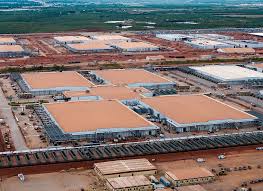- 95% of major investors plan to boost data center investments in 2025.
- AI workloads are driving a surge in global data center power demand.
- Hyperscale projects face capital constraints, requiring $1.8T by 2030.
Global real estate is undergoing a silent revolution. Once dominated by skyscrapers, malls, and luxury hotels, the sector is now increasingly focused on “invisible” property — the digital backbone powering our daily lives: Data centers and cloud infrastructure.
“The world of real estate is changing from what I’d call the ‘visible’ to the ‘invisible,’” said Kishore Moorjani, CEO of CapitaLand Investment’s alternatives and private funds team, highlighting the growing importance of these unseen assets.
Surge in Data Center Investments
Investor appetite for data centers is skyrocketing. According to CBRE’s 2025 survey of 92 major investors, 95% plan to increase their investments in data centers this year. Remarkably, 41% intend to allocate $500 million or more, up from 30% in 2024.
AI-driven workloads are fueling this demand. These systems require massive computing power, electricity, cooling, and networking infrastructure. Goldman Sachs projects global data center power consumption to jump 50% by 2027 and surge 165% by 2030.
Stuart Crow, CEO of APAC capital markets at JLL, notes, “Investors are reallocating portfolios away from traditional sectors into alternatives, with data centers and battery storage leading the way.”
Capital Challenges Loom
Despite robust interest, funding such massive projects is increasingly challenging. Hyperscale data centers, which range from 150 to 300 megawatts, can cost $12 million per megawatt to construct. AI-focused facilities exceeding 1 gigawatt require multi-billion-dollar investments.
Moorjani warns that banks are feeling the strain: “The sheer volume and quantum of these builds challenge traditional lenders.” Boston Consulting Group estimates that hyperscalers will need roughly $1.8 trillion in investments between 2024 and 2030 to meet AI and cloud demand.
Implications for Traditional Real Estate
The rise of AI and data-centric infrastructure is also reshaping physical real estate. Companies are rethinking office footprints amid workforce reductions, affecting demand for traditional office spaces. Savills predicts global commercial real estate investment will grow just 8% in 2025, far below earlier estimates. Yet, institutional investors remain committed to real estate as a core asset class.
Also Read: UAE Joins 50+ Countries in Crypto Tax Reporting Pact, First Data Swap in 2028
The shift from visible to invisible real estate marks a defining moment for the industry. As AI and cloud computing expand, data centers will continue to attract record investment, while traditional sectors adjust to new realities. For investors, the message is clear: the future of real estate is digital.
Disclaimer: The information in this article is for general purposes only and does not constitute financial advice. The author’s views are personal and may not reflect the views of CoinBrief.io. Before making any investment decisions, you should always conduct your own research. Coin Brief is not responsible for any financial losses.




